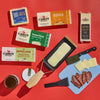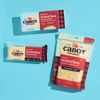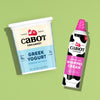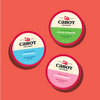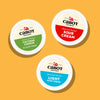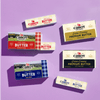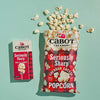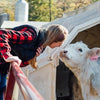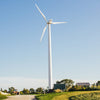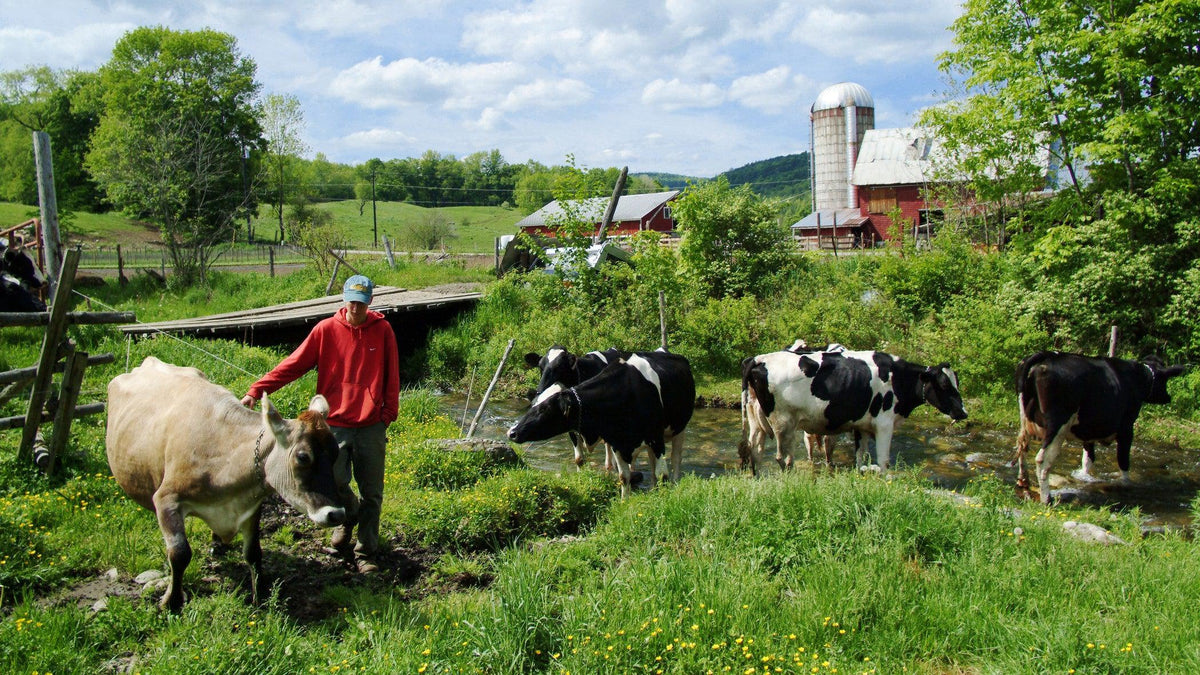
How Award-Winning Cabot Cheeses Are Made
Have you ever wondered how your favorite Cabot cheeses are made? Great-tasting food comes from quality sources, which are the beautiful bovines cared for by the farm families who own Cabot. Although the milk produced by their Holsteins and Jerseys is our most prominent source, we are fortunate to have a diverse supply to use in our cheese-making.
What are the different cow breeds?
Bovine derives from the Latin word for cow, but Bovidae, a biological family, includes cows, oxen, goats, sheep, bison, and buffalo. Here are a few details about different cow breeds and why we incorporate each into our cheese-making process.
Jerseys

With origins on Britain's Isle of Jersey, these cows have been purebred for at least six centuries. They are known for their docile and inquisitive nature. Jerseys also have the highest butterfat and protein of the six U.S. registered breeds, which makes their milk outstanding to use for cheese making. The milk coagulates faster than Holstein milk and produces roughly 10% higher cheddar cheese yields.
Holsteins

Producing the highest amount of milk of the six registered breeds, Holsteins are large animals with distinctive color patterns of black and white or red and white. They are the most popular breed in the United States, especially in New England and New York, which makes them essential in shaping the flavor of Cabot cheeses.
Ayrshires

Named for their place of origin in southwest Scotland, Aryshires are known for their hardiness, longevity, and easy breeding. However, their milk production and butterfat content are moderate.
Brown Swiss

Originating in the hills of Switzerland around 4,000 BC, Brown Swiss is the oldest known breed. With their friendly disposition and big floppy ears, they also have the second-highest protein levels in their milk of the six registered breeds.
Guernsey

The calm, placid Guernsey originated just off the coast of France. Farmers love them for their excellent temperament, and they provide a slightly less volume of milk than Holstein. However, their milk creates a deeper yellow cheese color that looks amazing on a dinner party cheese board or antipasto skewers.
Milking Shorthorn

This durable breed originated in Great Britain and can be red, red with white markings, white, or roan. They are known for their ease of management and durability, making them valuable for low-input dairy operations.
Which cow is best for Cabot Cheeses?
As mentioned above, Jerseys and Holsteins are the most prolific milk producers, making up 97% of the dairy herds in the United States. Since it takes 10 lbs of milk to make 1 lb of cheddar, economically minded farmers will choose cows who produce milk with high protein levels, increasing the rate of cheese curd formation.
What other factors impact cheese quality and taste?
As with any food, the source's environmental conditions play a significant role in the taste quality of the end product. No matter the breed, the cow's environment, feed, and stress are huge factors in cheese quality. Healthy, happy, and stress-free cows always make the best cheese.
How is cheese made?
The process of making cheese focuses on high-quality milk and precise temperature control. Here are the steps we take to make your favorite Cabot cheeses.
1. High-quality milk is gathered and pasteurized using metal plates and hot water to raise milk temperatures to at least 161°F for at least 15 seconds. The milk is then rapidly cooled.
2. A starter culture of bacteria is added to the milk and allowed to grow. This starter culture can affect the taste of the cheese and is typically composed of mesophiles or thermophiles. Mesophiles are the most common bacteria used, while thermophiles are chosen to make continental cheeses that are supple and sweet, such as Gruyère or Comté.
3. Rennet, an enzyme that helps turn the milk into cheese, is added.
4. Stainless steel wires are used to cut the developing cheese into small cubes of curd, which are casein proteins that form into small masses. Caseins are proteins that are naturally found in milk and give milk its white color. The liquid that separates from the casein proteins is called whey. Although it is a byproduct of the cheese-making process, whey protein is rich in essential amino acids that are needed for the body to absorb and use protein.
5. The whey is drained off after the mixture is pumped to the finishing table.
6. Salt is applied to enhance flavor and slow the acid development. Other flavoring ingredients can be added at this time.
7. Curd is packaged under pressure to create 42-pound blocks. These are then vacuum-sealed.
8. These are then placed in a temperature-controlled warehouse to be aged.
9. After the aging process, the cheese is transported to a store near you.
The source makes all the difference.
There's more to love about your favorite Cabot cheeses than the fantastic taste. Since we focus on sustainability, community, and making cows happy, they produce rich, buttery milk at the source of our award-winning products. These beautiful bovines and the farmers who care for them are at the core of our operations and mission—taste and see the difference a little TLC can make.
